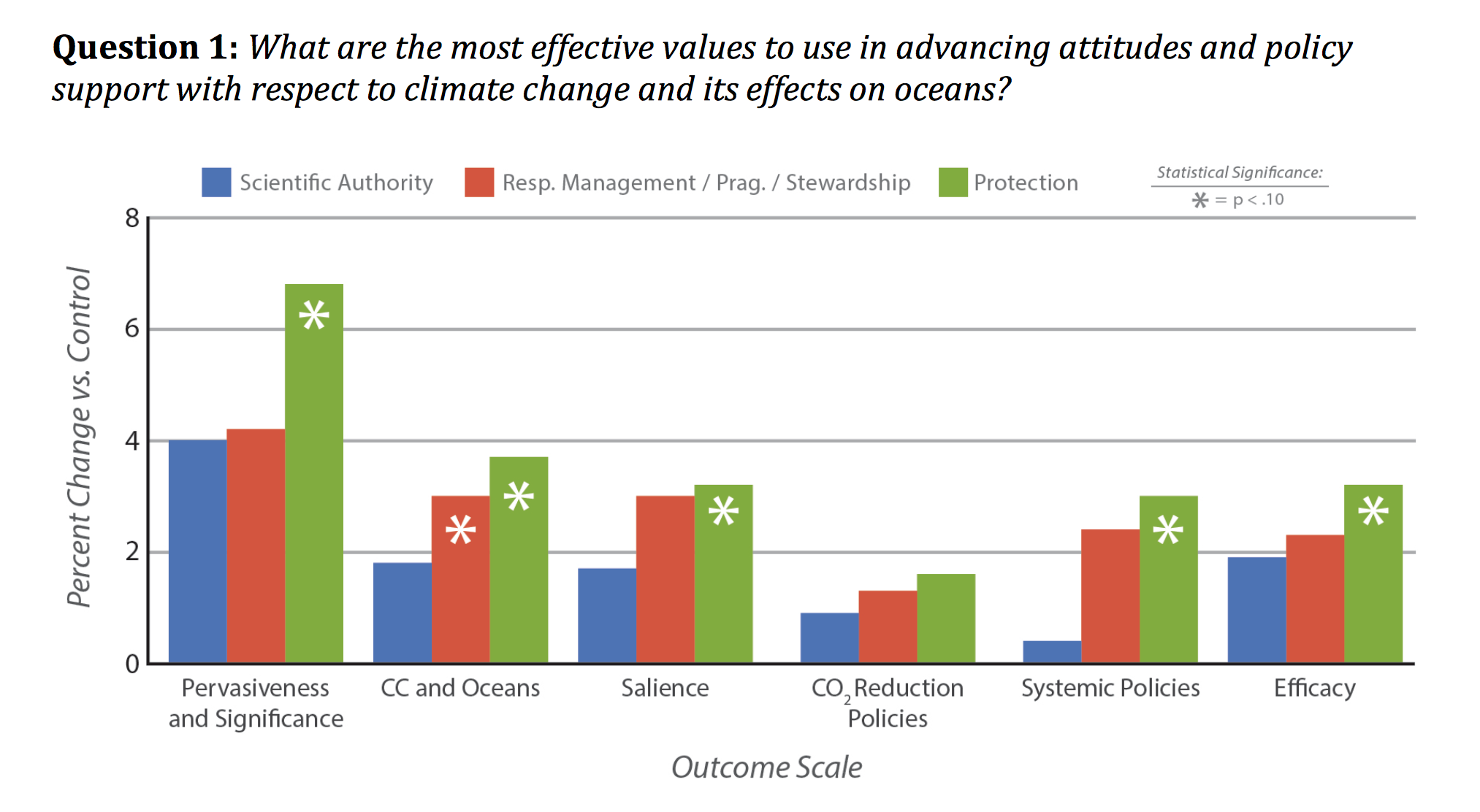Connecting Higher Ed. And Public Education

Public and higher education traditionally exist in separate spheres. And for good reason – there are different assumptions of prior knowledge, and different goals for informal educators vs. academic researchers. However, when it comes to highly-polarized, unfortunately politicized topics like climate change, the typical response of leaning into the “expert researcher” role only exacerbates the divide between public opinion and the ivory tower. Meanwhile, informal learning centers like zoos, aquariums, and museums have worked more productively towards disseminating climate change knowledge without disturbing societal tensions associated with the topic. So how do they do it? And why aren’t we taking notes?
Communicating climate research
Climate change can be a scary topic to broach for researchers: we all know the power of the internet masses to turn on you for one miscommunicated message about your research. I will never forget my colleagues that got a mention in a congressional hearing for “wasting taxpayer dollars building shrimp treadmills” to examine the effects of water quality on shrimp physiology. Yes, that happened. While this may seem discouraging, our research shows that 70% of Americans believe in climate change, yet 65% of them never talk about it. This silent majority is your strength, and we have an opportunity to amplify our call to action on climate change using specific, positive, and well-researched communication techniques.
Framing the story
Strategic framing® is a method used in the National Network for Ocean and Climate Change Interpretation’s strategy for effective communication. It allows the communicator to orient the audience towards productive thinking in a structured manner. At NNOCCI, this means we have three parts to our story:
- Why does this matter to society?
- How does it work?
- What can we do to improve the situation?
First, we appeal to shared values. Without this important step, we cannot establish buy-in – remember, your expert opinion is not enough (see the image below). Next, we make sure our audience is starting from a common knowledge base by stepping through complex scientific concepts with metaphors and explanatory chains (here’s some examples). Our most widely-used metaphor, the “heat-trapping blanket”, establishes the important role and source of carbon dioxide in the climate change story. Finally, we wrap up by making our audience the hero of our story – how can they help in a meaningful way? We want to make sure our solutions match the scale of the problem; climate change is a big deal, and we all know that turning off the lights doesn’t feel like a productive solution. Instead, highlighting local community solutions is our goal. Every message we produce has these three parts, and our research shows that this technique results in a more informed audience armed with hope and steps towards productive action.

Scientific authority is not as effective as other shared societal values, responsible management and protection, when communicating these six climate change topics.
Finding common knowledge in complex topics
Now, the Strategic Framing® technique sounds straightforward, but complex research often has more tenuous ties to simple climate change messages. Luckily, this technique’s use of explanatory chains provides a convenient place to navigate towards topics outside of the common “climate warming” rhetoric. For example, I work on the effects of increased variability in our climate on animal physiology. Using NNOCCI’s three parts to the story, I am constantly reminded to start from common knowledge: first describing our responsibility to protect our natural environments, then using a metaphor to explain how climate change works, and only after that do I use additional metaphors (from the NNOCCI playbook, of course) to explain why climate change may increase temperature variability.
After I am done explaining my research, I often use the context of the conversation – for example, it may be a public hearing on local watershed management – to offer community-based solutions. NNOCCI has shaped the way I communicate, even outside of climate change topics. For researchers, NNOCCI’s structured approach not only provides effective framing techniques but also reminds us to step outside of our topic’s bubble to assess what our audience’s common knowledge might be.
Develop your framing skills
This strategy takes time to learn, and it’s easier said than done to incorporate these elements naturally into a conversation or presentation. You can start your framing journey here, sign up to practice with our community here, and watch for upcoming trainings here. As climate researchers, we have a responsibility to learn effective communication strategies so that our research has the greatest, most positive impact possible. It is important to engage with our communities, make connections outside of our academic realm, and understand how we can play a bigger role in the climate story. Doing so using a social science research-based technique personally gives me the peace of mind to trust that the communication of my work, and others I choose to amplify, will have far-reaching, positive effects.
Find out more
At NNOCCI, we spend a lot of time convincing our informal educator members to reach out to their “friendly neighborhood scientists”. But my role in the big picture is to flip the script, and ask you, the scientists, to seek out knowledge from your “friendly neighborhood interpreter”. NNOCCI is here to fill that role for researchers, especially those interested in broadly inspiring civic action from their research topics. Visit us at http://www.nnocci.org/ to engage with us.
Image credits: Top image – Colour-altered image of an original by pine watt on Unsplash. Image of graph – Frameworks Institute (2014). The Value of Explanation: Using Values and Causal Explanations to Reframe Climate and Ocean Change.
About the Author:
Dr. Richelle Tanner is a Postdoctoral Research Associate at Washington State University, specializing in marine evolutionary and environmental physiology, climate change effects, and bioinformatics. She also serves as chair of the Science Partnerships Committee of the National Network for Ocean and Climate Change Interpretation.
More Blog Posts
 The Problem with Solutions & How to Fix ItThe Problem with Solutions & How to Fix It April 05 2017 This is the seventh and final post in a series about framing climate and ocean change. When environmental advocates talk about problems, they sometimes leave out one of the most important parts of the discussion: solutions. This error of omission has significant consequences. When the [READ MORE]
The Problem with Solutions & How to Fix ItThe Problem with Solutions & How to Fix It April 05 2017 This is the seventh and final post in a series about framing climate and ocean change. When environmental advocates talk about problems, they sometimes leave out one of the most important parts of the discussion: solutions. This error of omission has significant consequences. When the [READ MORE] Communicating Climate in Higher EducationCommunicating Climate in Higher Education by Heidi Zamzow, November 13 2018 Many of us who trained as marine scientists went into our field because we wanted not only to study the ocean, but to protect it — and to inspire others to do so as well. We reasoned that, if we just provided people with information, they would change their attitudes and [READ MORE]
Communicating Climate in Higher EducationCommunicating Climate in Higher Education by Heidi Zamzow, November 13 2018 Many of us who trained as marine scientists went into our field because we wanted not only to study the ocean, but to protect it — and to inspire others to do so as well. We reasoned that, if we just provided people with information, they would change their attitudes and [READ MORE] Global Climate Action Summit RecapGlobal Climate Action Summit Recap by Allison Arteaga, September 20 2018 One week ago, leaders from around the world gathered in San Francisco for the Global Climate Action Summit. The event celebrated ongoing efforts to curb fossil fuel emissions, while also calling for more ambitious action to meet the targets set forth by the Paris Agreement. [READ MORE]
Global Climate Action Summit RecapGlobal Climate Action Summit Recap by Allison Arteaga, September 20 2018 One week ago, leaders from around the world gathered in San Francisco for the Global Climate Action Summit. The event celebrated ongoing efforts to curb fossil fuel emissions, while also calling for more ambitious action to meet the targets set forth by the Paris Agreement. [READ MORE] To Frame Climate Change, Lead with a Researched Value—Not a “Rogue” OneTo Frame Climate Change, Lead with a Researched Value—Not a “Rogue” One January 20 2017 This is the sixth post in a series about framing ocean and climate change. So, you want to motivate the public to take action to address climate and ocean change? One of the most important communications moves you can make is to open with a broad statement [READ MORE]
To Frame Climate Change, Lead with a Researched Value—Not a “Rogue” OneTo Frame Climate Change, Lead with a Researched Value—Not a “Rogue” One January 20 2017 This is the sixth post in a series about framing ocean and climate change. So, you want to motivate the public to take action to address climate and ocean change? One of the most important communications moves you can make is to open with a broad statement [READ MORE] Of Penguins & Solar PanelsOf Penguins & Solar Panels by Billy Spitzer, August 28 2018 Here’s a surprising penguin fact: much like our own communities, African Penguins and the ecosystems they’re part of benefit from our transition away from fossil fuels and toward renewable energy. Like many people, we at the New England Aquarium believe in safeguarding people and [READ MORE]
Of Penguins & Solar PanelsOf Penguins & Solar Panels by Billy Spitzer, August 28 2018 Here’s a surprising penguin fact: much like our own communities, African Penguins and the ecosystems they’re part of benefit from our transition away from fossil fuels and toward renewable energy. Like many people, we at the New England Aquarium believe in safeguarding people and [READ MORE]